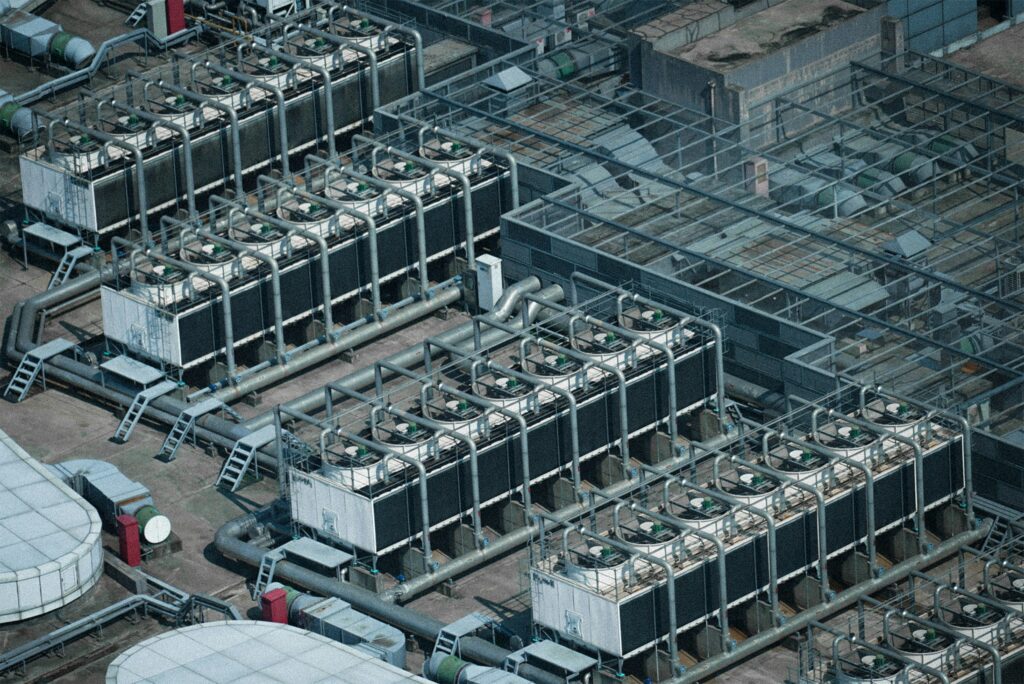Cooling tower water efficiency and power efficiency are closely linked, as optimized water use directly improves energy performance in industrial and commercial cooling systems. Cooling towers dissipate heat from data centers relying on water evaporation to regulate temperatures. When water treatment is inefficient—due to scaling, fouling, or microbial growth—heat exchange performance declines, forcing cooling systems to work harder and consume more energy.

Most data centers currently rely on chemical-based water treatment for cooling towers, using biocides, scale inhibitors, and pH adjusters to manage scaling, corrosion, and biofouling. While these methods can be effective in the short term, they come with significant environmental and operational drawbacks. Frequent chemical dosing leads to high volumes of blowdown water containing residual chemicals, increasing water waste and discharge-related environmental risks. Operationally, these systems require constant monitoring, manual handling of hazardous substances, and regular maintenance—all of which increase labor costs, pose health risks to facility staff, and reduce overall efficiency.
The presence of scaling reduces heat transfer efficiency, forcing chillers and pumps to work harder and consume more energy. Corrosion can damage pipes and heat exchangers, leading to costly repairs, unplanned downtime, and asset degradation. Biofilms, formed by microbial growth, not only impede heat exchange but also breed pathogens, creating potential health hazards and compromising system hygiene. Together, these issues drive up operating expenses, shorten equipment lifespan, and negatively impact Power Usage Effectiveness (PUE) and Water Usage Effectiveness (WUE), making chemical treatment a costly and unsustainable long-term strategy.
Hydroleap provides a smart, chemical-free solution for cooling towers in data centers using our electrooxidation (EO) technology. Our system tackles scaling, biofouling, and corrosion in a single, automated reactor—improving chiller efficiency, reducing blowdown by up to 80%, and cutting chemical use by 50–70%. Easily retrofitted into existing setups, it enhances cycles of concentration (COC) by up to 140%, lowers operational costs, and supports sustainability and ESG goals. Cleaner water enables more efficient heat exchange, reducing energy use and extending equipment life—contributing to improved Power Usage Effectiveness (PUE) and Water Usage Effectiveness (WUE).
